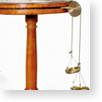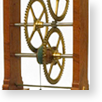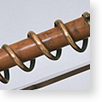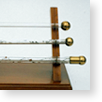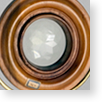These rooms contain instruments and machines designed to illustrate the basic principles of mechanics, hydraulics, electrostatics and optics to a vast public. In the 18th century, the cultural vogue that stimulated curiosity for spectacular experimental demonstrations also led to a demand for new educational instruments. The models for studying mechanics displayed in the first room faithfully reflect those described in the treatises of the most famous eighteenth-century scientists and demonstrators. They remained in use, with few modifications, up to the first decades of the 20th century. In the second room are displayed educational instrumentation for optics, hydraulics and pneumatics, electromagnetism and electrodynamics. The industrial production of educational instruments, with centres of excellence in London and Paris, remained limited in Italy, so that numerous collections were formed mainly of instruments purchased abroad.
Experimental Apparatus
In 18th-century physics cabinets the laws of mechanics were illustrated by numerous experimental devices, often elegantly crafted, for studying force, ...
(12 objects)
Simple and Complex Machines
Educational instruments for studying mechanics included models of simple machines, such as levers, screws, pulleys, winches, and inclined planes; and models ...
(14 objects)
Hydraulics and Pneumatics
The science of hydraulics was traditionally illustrated with working models of machines for lifting water, such as pumps, water wheels and Archimedean ...
(7 objects)
Electrodynamics and Electromagnetism
In the 19th century, to the numerous devices used to perform spectacular experiments in electrostatics, were added portable kits of instruments to illustrate ...
(20 objects)
Optical Instruments
Until the early 19th century lenses, mirrors and prisms had been used to demonstrate the optical phenomena of reflection, refraction and dispersion of ...










